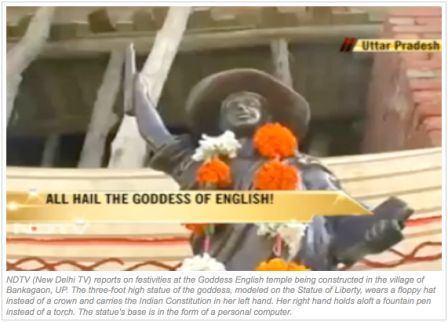by Gowri Ramnarayan
The Grip of Change is a work of literature, not a manifesto.

THE first thing that strikes you about The Grip of Change? Author P.Sivakami’s translation makes you forget it was written originally in Tamil. More remarkably, in dealing with life in a Dalit community, it deals with life itself. It is a work of literature, not a manifesto. Avoiding shrillness makes the novel more poignant and powerful.
About centuries-old injustice, and rank destitution, as seen by Gowri, the young daughter of Dalit leader Kathamuthu, the story refuses to drown itself in misery. It shows socio-political shifts bringing about changes, and the faint glow of better tomorrows afar. Not as roseate dreams, but realised in the author’s own breaking free from some shackles, and in a cousin who refuses to kowtow to the cannibalising forces within and outside his community.
Balanced narrative
The socio-political shifts inherent in Kathamuthu’s life. He takes on an upper caste widow as second wife, and after fighting for the rights of the widowed Thangam, who is repeatedly raped and enslaved by her landlord, appropriates her money and her body. She joins his polygamous household. Kathamuthu’s machinations make his elder brother Kalimuthu appear a liar and villain, evict him from his home, and destroy his life. But his son Chandran miraculously escapes bitterness and becomes an upstanding role model for the community’s youth. Allowed to pursue schooling, Kathamuthu’s rebel daughter Gowri finds an independence and self respect denied to her mother and stepmothers.
Unflinchingly critical of the internal hierarchies of sub-castes in her own community, Sivakami is most trenchant about male chauvinism among Dalits. Being raped by Kathamuthu whom she has come to respect as an elder brother, is a greater betrayal for Thangam than the upper caste Udayar’s savage lust. Thangam’s unresisting acceptance of both evils throbs with a silent scream. Her battered body becomes the playing field for all subsequent action, sparking community unrest, caste riots, and shifts in family relationships. Wisely, the author keeps the counterpoint brief. An upper caste wife slakes her secret lust on her Dalit serf. Here too, for the exploiter, there is no perception of any soul in the abused body.
The characters are presented as they are, warts and all. Conniving is a way of life for oppressor and oppressed. When an old crone’s carelessness sets village huts ablaze, Dalit leaders insist that the huts were torched by caste Hindus. The disaster becomes their political and economic gain.
The outcastes ape the upper castes, and see themselves as they are seen. In the sequel, “Author’s Notes” following The Grip of Change, Sivakami blames herself for adopting an equally distorted gaze upon her community. Has she twisted the truth to satisfy her long-smouldering anger against her real life father, and frustrations with her own folk?
“The upper castes hail you because you accepted their rules of the game, and you mistook that as acclaim for your book,” she tells herself. “Your subconscious mind addresses the rich with respect and the poor with disrespect.”
But such self-critical appraisals, ruthless and unflinching as they are, cannot save the sequel. In “Author’s Notes”, Sivakami revisits her hometown. She see-saws uneasily between commentary and recollection as she deconstructs her earlier “fiction”. She examines her relationship with her family and clan, wondering if she has betrayed them in fiction. But the scrutiny is too direct and naive, and somewhat contrived. It aborts those sharp, suggestive strokes which made the novel so haunting.
The real concern
However, the “Author’s Notes” has its moments. A seemingly simple visual in the narrative depicts tellingly her own battle for freedom, and the human struggle against every form of mindless tyranny and manipulative suppression. A little girl climbs a tree, as her elder brother chats with friends near the fence.
“Why are you climbing the tree like a monkey” (He asks).
She pretended not to hear him and continued to climb.
“Get down.”
“How does it bother you if I climb a tree?”
He hit her and she went crying to her mother.
Both The Grip of Change and “Author’s Notes” are about trying to climb, even when the act catapults the climber into anguish, torment and chastisement. Writing on the atrocities perpetrated by humans upon other humans, on the attempt by Dalit youth to ring in a better reality, Sivakami’s concern is really with this unquenchable force within the living mind.
Courtesy: The Hindu, June/04/06
The Grip of Change, P. Sivakami, Orient Longman, 2006, p.207, Rs. 190.









